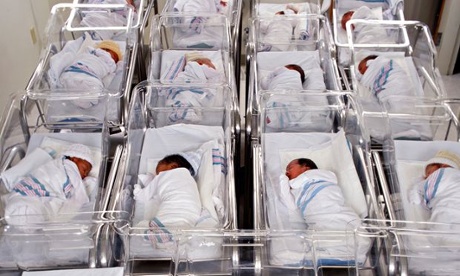Report says infant and young-child mortality rate more than three times higher in NT than in Melbourne’s southern suburbs

Children in the Northern Territory are more than three times more likely to die before they turn five than in the southern suburbs of Melbourne, a study shows.
The National Health Performance Authority report, released on Thursday, is the first of its kind that presents data at a local level for infant and young child mortality, smoking in pregnancy, antenatal visits and low-birthweight babies.
Data was collected from 61 Medicare Local catchments across Australia and the report shows wide variance in child death rates depending on address.
The highest rate was in the Northern Territory, with 9.2 deaths per 1,000, while the lowest was in Bayside, Melbourne, with 2.6 children dying per 1,000 before their fifth birthday.
“The numbers of infants and children who die prematurely has fallen rapidly in recent years on a population basis,” the report said. “Nevertheless, Australia has infant mortality rates three times higher than the best-performing countries.”
While the report showed higher mortality rates in many regional and rural areas compared with metropolitan areas, and in lower-income compared with higher-income areas, there were some areas that did not follow this trend.
The Nepean-Blue Mountains area in NSW and Barwon and Goulburn Valley in Victoria, for example, are classed as middle- to lower-income regional areas but they had child mortality rates lower than wealthier areas such as the Gold Coast and the ACT.
The authority’s chief executive, Dr Diane Watson, said the report helped identify areas where improvements in child and maternal health should be targeted and areas that demonstrated what was possible.
“These results empower health system managers and local communities to target their efforts to drive child and maternal health programs for the benefit of all families,” Watson said.
The report showed that 13% of pregnant women smoked. The lowest rate of smoking while pregnant, 1.8%, was on Sydney’s north shore and northern beaches, while the highest was 33.1% in far western NSW.
